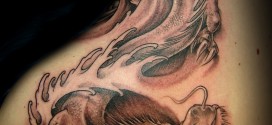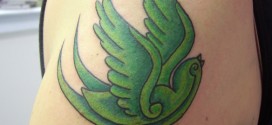AURI REYNOSO, a hairstylist in Englewood, N.J., says she wanted to roll out of bed “looking beautiful.” So three years ago, she asked Melany Whitney, a certified permanent-cosmetics professional based in New York, New Jersey and Florida, to tattoo eyeliner and defined brows onto her face.
Though the procedure was “a little uncomfortable,” said Ms. Reynoso, now 39, she was delighted with the results. “Everything for beauty,” she said. “It’s amazing how you can wake up looking absolutely fabulous and get ready in five minutes. I just apply blush, lip gloss and mascara and I’m done.”
Permanent makeup, also known as micropigmentation or cosmetic tattooing, dates back to the early 1980s, when it was developed to address alopecia, a condition that causes hair loss (including eyebrows). Since then, the field has expanded to include burn victims and cancer survivors, patients with arthritis and Parkinson’s disease who have difficulty putting on makeup and people like Ms. Reynoso, who would simply rather limit the amount of time spent in front of a mirror.
But while many are thrilled with their outcomes, all is not rosy in the world of needles and ink. The word “permanent” is a misnomer because the color fades with time. Some patients develop granulomas, keloids, scars and blisters, and they report burning sensations when they undergo an M.R.I.
What’s more, although the inks used in permanent makeup and the pigments in these inks are subject to the scrutiny of the Food and Drug Administration, regulations for practitioners (electrologists, cosmetologists, doctors, nurses and tattoo artists) vary by state. “You can go on eBay and buy machines and pigment and go in the garage and set up shop,” said Dr. Charles Zwerling, an ophthalmologist in Goldsboro, N.C., and an author of the forthcoming book “Micropigmentation Millennium.” He founded the American Academy of Micropigmentation, a nonprofit professional organization that offers certification for practitioners, in 1992.
“We see thousands of faces being destroyed by people who don’t get trained properly, and that’s the biggest problem in permanent cosmetics,” said John Hashey, the owner of John Hashey’s Advanced School of Permanent Cosmetics in Oldsmar, Fla. Mr. Hashey said that 90 percent of his business is fixing mistakes. “Your average cosmetologist who cuts hair has to do 1,200 to 1,500 hours just to do that,” he said. “How is that any more important than taking a needle to someone’s eye?”
The adverse reactions to micropigmentation include infections like H.I.V., hepatitis, staph and strep from dirty needles, and allergic reactions to the permanent dyes, said Dr. Jessica J. Krant, a dermatologist in Manhattan and an assistant clinical professor of dermatology at the SUNY Downstate Medical Center in New York.
A report in this month’s issue of Clinical Infectious Diseases reported an outbreak of mycobacterium haemophilum, a nontuberculous mycobacterium that causes skin, joint, bone and pulmonary infections, after permanent makeup was applied to patients’ brows. A study last September in Contact Dermatitis, a medical journal, investigated severe adverse reactions like swelling, burning, and the development of papules in four patients who had had at least two permanent-makeup procedures on their lips. “In light of the severe and often therapy-resistant skin reactions, we strongly recommend the regulation and control of the substances” used in the colorants, the authors wrote.
Nancy Erfan, a real estate agent in Monterey, Calif., had a bad experience. In November 2003, Ms. Erfan, now in her 30s, had permanent color applied to her lips and eyes. The technician told her she would be swollen for a few days, and gave her a cream to help. But the swelling worsened, Ms. Erfan said, and soon she had “big bumps” around her eyes and lips.
“I could barely open my mouth to eat or speak,” she said. She visited a variety of dermatologists and plastic surgeons, but found no remedy. “They said I was obviously having an allergic reaction, but they didn’t know what to do.”
It turned out that the colors used in one of the dyes by Premier Pigments, a manufacturer, was tainted; after the F.D.A. received more than 150 complaints, the company eventually recalled the entire line.
Finally Ms. Erfan found Dr. Mitchel Goldman, a dermatologist in San Diego who specializes in laser removal of tattoos. He did six treatments over a year, for a total of about $10,000, which insurance did not cover. Acupuncture and Chinese herbal medicine helped with facial pain and swelling, she said. Dr. Goldman would like greater F.D.A. supervision of permanent makeup. “I’ve had patients who have infections on their lips and eyebrows because these tattoo artists are totally not regulated,” he said. “They use equipment that’s not sterile. A lot of infections also come from the tap water. They dip their needles in and transfer infections. The pigment goes to lymph nodes. Who knows if 20 years down the line patients will have lymphoma or cancer because of these carcinogens in tattoo pigment?”
Mr. Hashey thinks practitioners should be regulated nationally and required to get 600 to 1,500 hours of training.
Elizabeth Finch-Howell, the owner and founder of Derma International, a permanent cosmetics manufacturer in Kempton, Pa., believes a minimum of 100 hours is enough. (She got a tattoo that matched her skin tone to cover up a port-wine colored birthmark on half of her face, performing the procedure herself because “I didn’t trust anyone else,” she said.)
As for Ms. Erfan, she is still angry, years later. It took her more than a year and a half to recover, she said, and she still has scars on her lips. She must wear makeup to cover the scars and white lines above her mouth, and the facial pain persists. “Applying makeup is one thing, but injecting it into your body? I feel stupid,” she said. “But everything I read about permanent makeup was positive, how even Cleopatra was tattooing her eye liner and lip liner. I thought it was safe.”
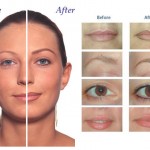 |
 |
 |
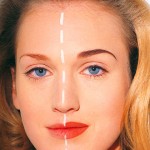 |
 |
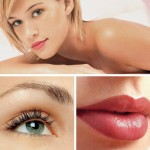 |
 |
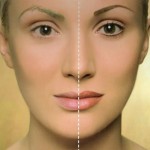 |
 Tattoo Fonts For Women and Women Tattoo Fonts Gallery For Men and Women
Tattoo Fonts For Women and Women Tattoo Fonts Gallery For Men and Women


